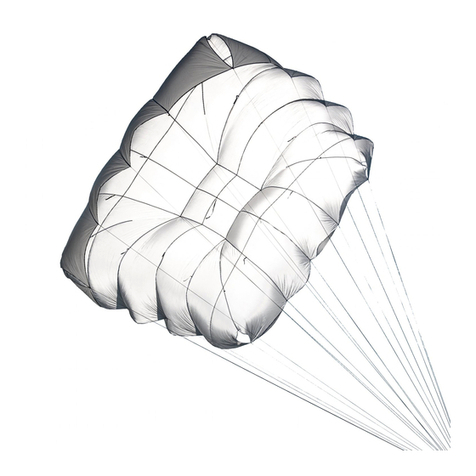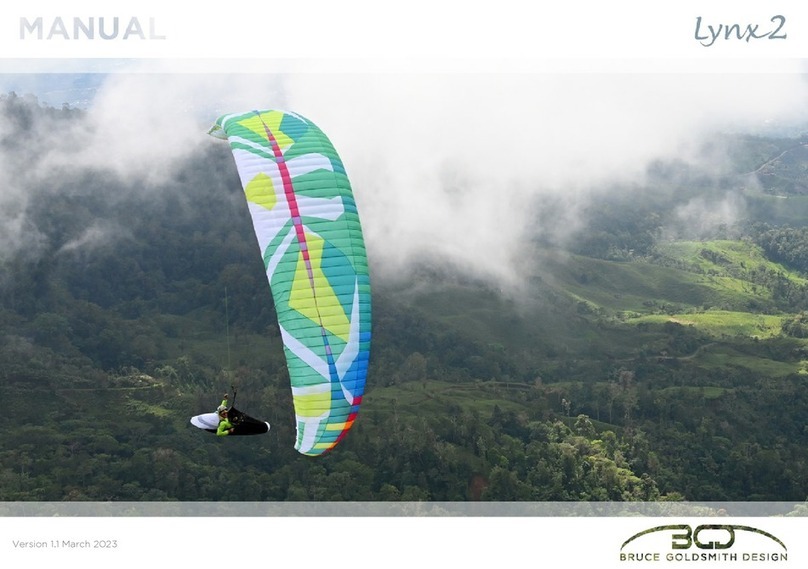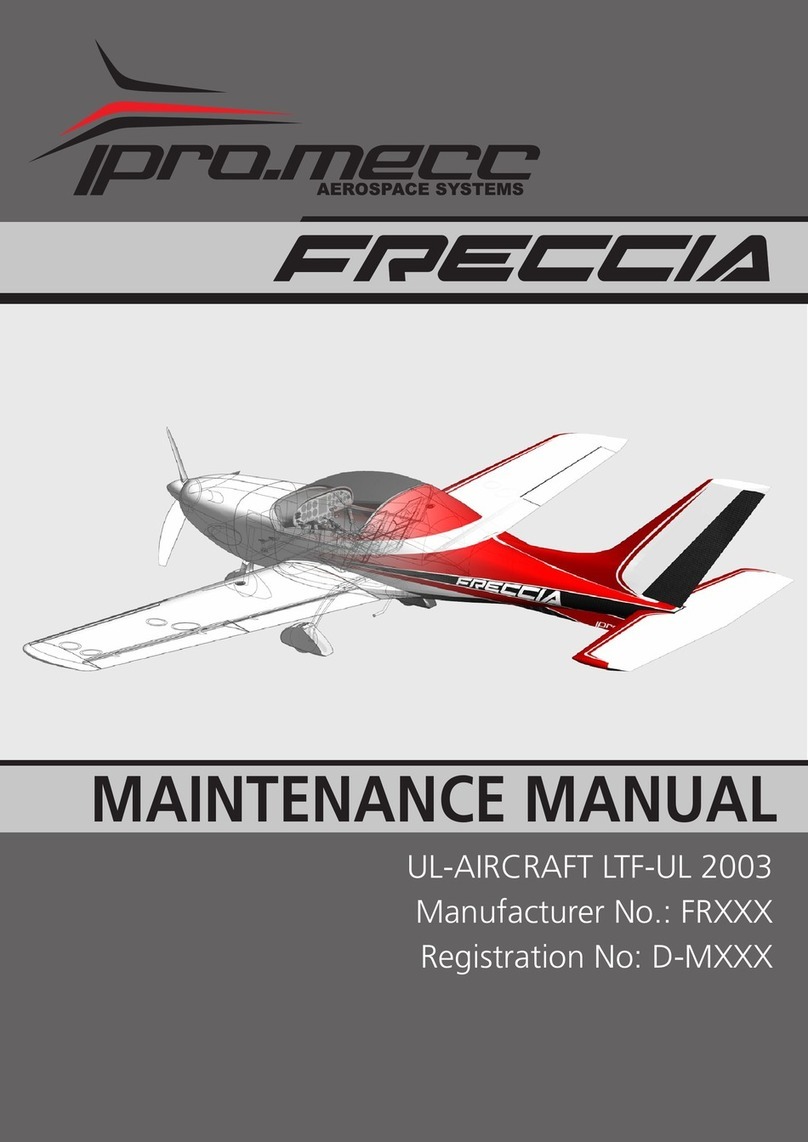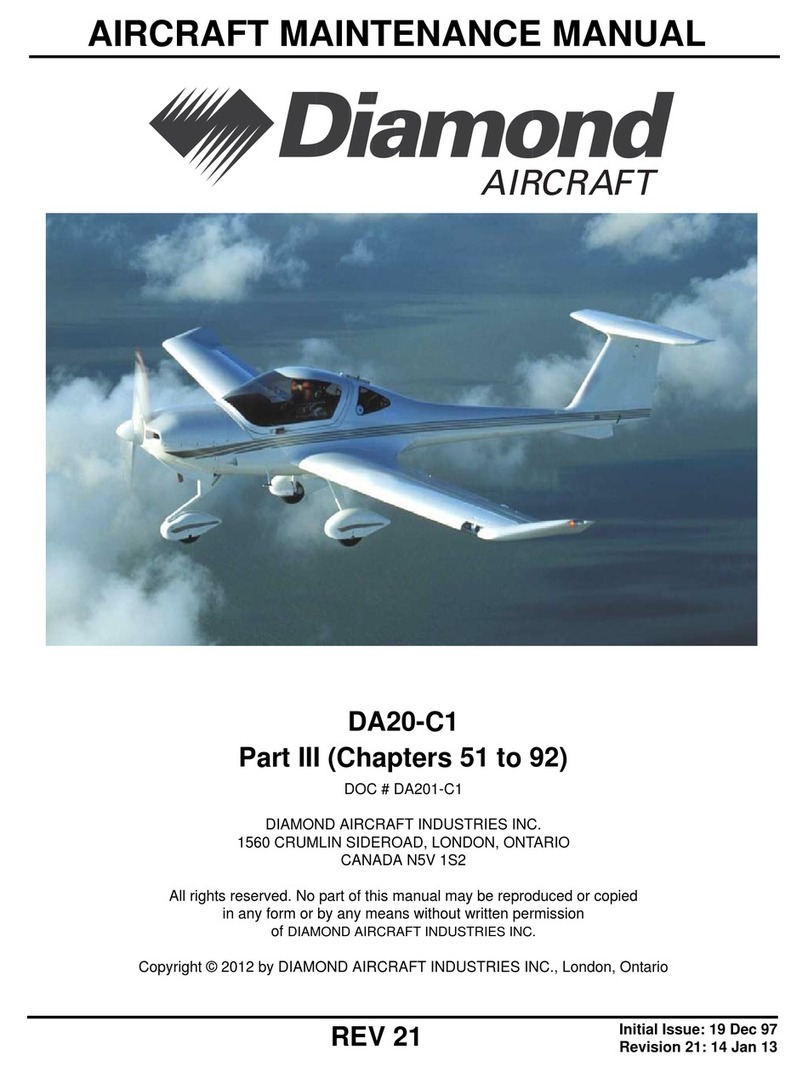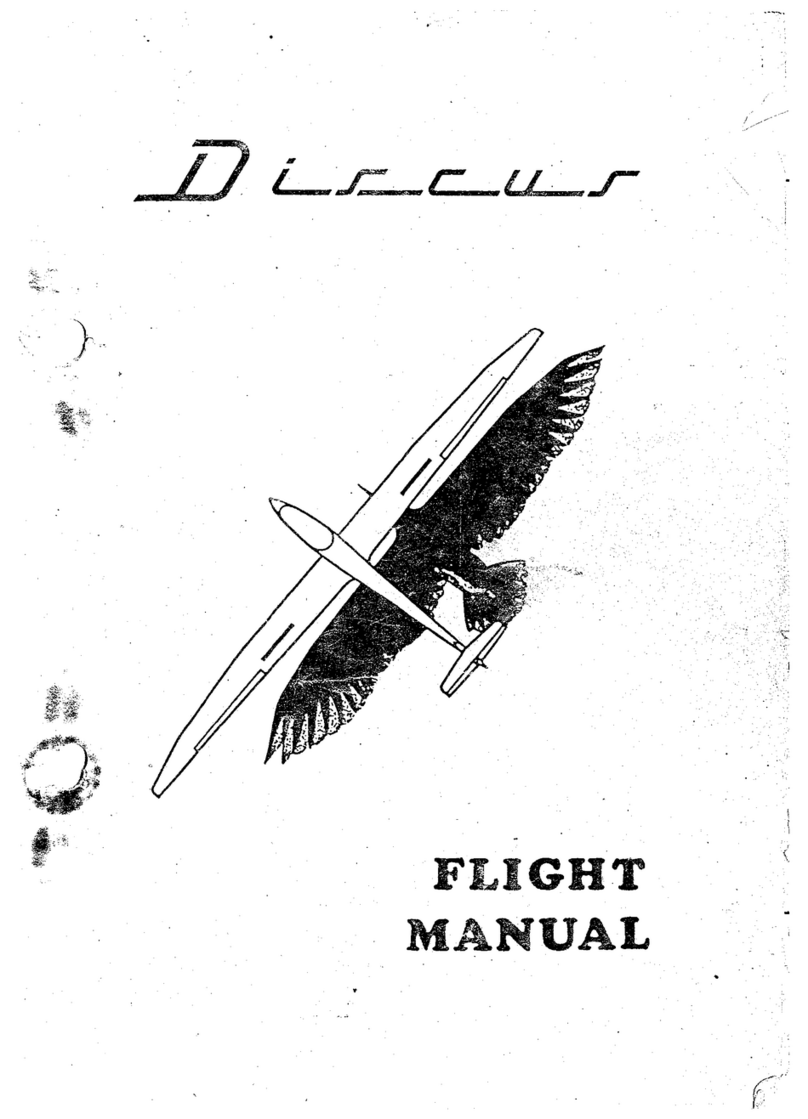BGD Base LITE User manual

1
Version 1.0 March 2017
Version 1.0 March 2017

2
Version 1.0 March 2017
Welcome 3
1 – Introduction 4
2 – Preparation 5
3–Pre-ightInspection 6
4–FlightCharacteristics 7
5 – Recovery Techniques 14
6–StorageandServicing 17
7 – Technical Data 19
8–ServiceBooklet 29
9–ClosingWords 33
Contents

3
Version 1.0 March 2017
BASE LITE LITE Owner’s Manual
PARAGLIDER EN / LTF B
Welcome to Bruce Goldsmith Design
BGDisaworldleaderinthedesignandproductionofparagliders.FormanyyearsBruceGoldsmithandhisteam
havebeendevelopingproductswithworld-beatingperformanceforpilotswhowantthebest.Weapplyour
competitiveknowledgetodesigntopqualityproductsthatcombinethehighestperformancewiththesafehandling
ourcustomersvalueandrespect.BGDpilotsappreciateourqualityandreliability.BGD´sworld-classstatusisbased
ontheskillsandexpertisewehavedevelopedincombiningaerodynamicdesignwithclothandmaterialstechnology.
AllBGDproductsaredevelopedandmadewiththesameskillandattentiontogooddesignthataresynonymous
withtheultimateperformanceandprecisionrequiredbyparagliders.
Congratulations on your purchase of the BGD BASE LITE
TheBASELITEisaparaglider,designedtoahighstandardofsafetyandstability,butitwillonlyretainthese
characteristicsifitisproperlylookedafter.Pleasereadthismanualcarefullyfromthersttothelastchapterto
ensureyougetthebestoutofyourBASELITE.
Thismanualhasbeenpreparedtogiveyouinformationandadviceaboutyourparaglider.Ifyoueverneedany
replacementpartsorfurtherinformation,pleasedonothesitatetocontactyournearestBGDdealerorcontactBGD
directly.
1 Introduction

4
Version 1.0 March 2017
TheBASELITEisanentry-levelparaglidersuitableforintermediatepilotsofferingahighlevelofpassivesafety
combinedwithspeedandgoodperformancewhichmakethisawingarealpleasuretoy.
Theuseofthisgliderislimitedtonon-aerobaticmanoeuvres.
Thisparaglidermustnot:
• Beownwithmorethanthemaximumcertiedtotalload
• Haveitstrimspeedadjustedbychangingthelengthofrisersorlines
• Beowninrainorsnow
• Betowedwithatowlinetensioninexcessof200kg.
Itisyourdealer´sresponsibilitytotestytheparagliderbeforeyoureceiveit.Thetestightrecordisonpage29
ofthismanual.Pleasebesurethatithasbeencompletedbyyourdealer,toprovethatthetestighthasbeendone.
Failuretotestyanewparaglidermayinvalidateanywarranty.
Anymodication,e.g.changeoflinelengthsorchangestothespeedsystem,causesalossofairworthinessand
certication.WerecommendthatyoucontactyourdealerorBGDdirectlybeforeperforminganykindofchange.
1 Introduction
1 Introduction

5
Version 1.0 March 2017
2 Preparation
1. Selectasuitabletake-offareadeterminedbywindandterrain,clearofanyobstaclesthatmaycatchinthe
linesordamagethecanopy.
2. Ifyourparagliderhasbeencorrectlypacked,youshouldtakeittothetopofthetake-offarea,andallowthe
rolledcanopytounrollitselfdownthehill(ifonaslope).Thisshouldleavetheparagliderwiththebottom
surfacefacingupwards,theopeningsatthedownwindendofthetake-offarea,andtheharnessatthetrailing
edgeattheupwindside.
3. Unrollthecanopytoeachsidesothattheleadingedgeopeningsformasemicircularshape,withthetrailing
edgedrawntogetherasthecentreofthearch.Theharnessshouldbedrawnawayfromthecanopyuntilthe
suspensionlinesarejusttight.
2 Preparation

6
Version 1.0 March 2017
3 Pre-ight Inspection
TheBASELITEisdesignedtobeassimpleaspossibletoinspectandmaintainbutathoroughpre-ightprocedureis
mandatoryonallaircraft.Thefollowingpre-ightinspectionprocedureshouldbecarriedoutbeforeeachight.
1. Whilstopeningouttheparaglider,checktheoutsideofthecanopyforanytearswhereyourparaglidermay
havebeencaughtonasharpobjectorevenhavebeendamagedwhilstinitsbag.
2. Checkthatthelinesarenottwistedorknotted.Dividethesuspensionlinesintosixgroups,eachgroup
comingfromoneriser.Bystartingfromtheharnessandrunningtowardsthecanopyremoveanytanglesor
twistsinthelines.Partiallyinatingthecanopyinthewindwillhelptosortoutthelines.
3. Itisparticularlyimportantthatthebrakesareclearandfreetomove.Checktheknotwhichattachesthebrake
handlestothebrakelines.Severalknotsshouldbeusedhereorthelooseendsmaygetentangledinthebrake
pulleys.Bothbrakesshouldbethesamelengthandthiscanbecheckedbyaskinganassistanttoholdtheupper
endofthebrakelinestogetherwhilethepilotholdsthebrakehandles.Thebrakelinesshouldbejustslackwith
thewinginatedwhenthebrakesarenotapplied.Aftercheckingthebrakelineslaythemontheground.
4. Alwayscheckthebucklesandattachmentsontheharness.Ensurethetwomainattachmentmaillons/
karabinersfromtheharnesstothemainrisers,andthesixshackleswhichattachtheriserstothelines,are
tightlydoneup.
5. Beforethepilotattacheshimselftotheharnessheshouldbewearingagoodcrashhelmet,andbootswhich
provideanklesupport.Putontheharnessensuringallthebucklesaresecureandproperlyadjustedforcomfort.
Yourparagliderisnowreadyforight.
3Pre-ightInspection

7
Version 1.0 March 2017
4 Flight Characteristics
ThismanualisnotintendedasaninstructionbookonhowtoytheBASELITE.Youshouldbeaqualiedpilotor
undersuitablesupervision,butthefollowingcommentsdescribehowtogetthebestfromyourBASELITE.
Weight range
EachsizeoftheBASELITEiscertiedforacertainweightrange.Theweightreferstothe‘overalltake-offweight’.
Thismeanstheweightofthepilot,theglider,theharnessandallotherequipmentcarriedwithyouinight.
WerecommendtoytheBASELITEinthemiddleoftheweightrange.
IfyouytheBASELITEinthelowerhalfoftheweightrange,theturningagilitydecreasesandthegliderwillbemore
damped.Instrongturbulencethewingtendstodeformandtocollapseslightlymorethanwithahigherwingloading.
IfyoumainlyyinweakconditionsyoushouldconsideryingtheBASELITEtowardsthelowerendoftheweight
range.
IfyouytheBASELITEintheupperhalfoftheweightrange,theagilityandthestabilityinturbulencewillincrease.
Alsothespeedwillincreaseslightly.Theselfdampingwilldecreaseinturns,aswellasaftercollapses,soifyouyin
bumpyconditionsandyouwantadynamicightcharacteristicyoushouldgoforthetopoftheweightrange.
Active Piloting
EventhoughtheBASELITEisdesignedasaneasyglider,‘activepiloting’isatoolthatwillhelpyouywithgreater
safetyandenjoyment.Activepilotingisyinginempathywithyourparaglider.Thismeansnotonlyguidingtheglider
throughtheairbutalsobeingawareoffeedbackfromthewing,especiallyinthermalsandturbulence.Iftheairis
smooththefeedbackcanbeminimalbutinturbulencefeedbackiscontinuousandneedstobeconstantlyassessed
4FlightCharacteristics

8
Version 1.0 March 2017
bythepilotthroughthebrakesandtheharness.Suchreactionsareinstinctiveingoodpilots.Maintainingcontact
withthegliderthroughpressureonthebrakesisessentialandallowsthepilottofeelthelossofinternalpressure,
whichoftenprecedesacollapse.TheBASELITEishighlyresistanttocollapsewithoutanypilotactionatall,but
learninghowtoyactivelywillincreasethissafetymarginevenfurther.
Harness
TheBASELITEistestedwitha‘GH’(withoutdiagonalbracing)typeharness.TheGHcategoryincludesweightshift
harnessesaswellasABSstyle(semistable)harnesses.
Approved harness dimensions
ThisgliderhasbeentestedwithaharnessthatcomplieswiththeENstandardharnessdimensions.
Thesearelaidoutinsection3.5.6andare:
Seatboardwidth:42cm;Thehorizontaldistancebetweentheattachmentpointsoftheparagliderrisers(measured
fromthecentrelineofthekarabiners)mustbe:
• Upto50kg=38cm
• 50-80kg=42cm
• 80kgormore=46cm
Take-off
TheBASELITEiseasytoinateinlightorstrongerwindsandwillquicklyriseoverheadtotheyingposition.The
bestinationtechniqueistoholdoneA-riserineachhand.The‘big-ear’riserscouldbealsoheldforthebestination.
Forward launch
InationisbestdonebytakingtheA-risersoneineachhand.TheA-risersaremarkedwithredclothtomakethem
4FlightCharacteristics

9
Version 1.0 March 2017
easiertond.Innilorverylightwind,standwithalltheA-linestautbehindyou,thentakeoneortwostepsback
(donotwalkallthewaybacktothecanopy)andbeginyourlaunchrunpullinggentlyandsmoothlyontheA-risers.
Assoonasthecanopystartstoriseofftheground,stoppullingsohardontheA-risersbutpullalltherisersevenly
throughtheharness.MaintaininggentlepressureontheA-risersalwayshelpsinverycalmconditions.Haveyour
handsreadytoslowupthecanopywiththebrakesifitstartstoacceleratepastyou.
Reverse Launch
Inwindsover10km/hitisprobablybettertodoareverselaunchandinatethecanopywhilstfacingitusingtheA-risers,
withoutthe‘Baby-Arisers’topreventthegliderfrominatingthewingtipsrst.
TheBASELITEhaslittletendencytoovershootbutreleasingpressureontheA-riserswhenthecanopyisatabout45°willhelp
toavoidovershooting.ThestrongerthewindandthegreaterthepressureontheA-risers,themorequicklythecanopywillrise.
Turning
TheBASELITEdoesnotrequireastrong-handedapproachtomanoeuvring.Forafastturnsmoothlyapplythebrake
onthesidetowhichtheturnisintended.Thespeedwithwhichthebrakeisappliedisveryimportant.Ifabrakeis
appliedfairlyquicklythecanopywilldoafasterbankingturn,butcaremustbetakennottobanktooseverely.To
attainamoreefcientturnatminimumsink,applysomebraketotheoutsidewingtoslowtheturnandprevent
excessivebanking.TheBASELITEiesverywelllikethis,butcaremustbetakennottoover-applythebrakesasa
spincouldresult,althoughtheBASELITEhasaverylowspintendency.TheBASELITEwillturnfarmoreefciently
ifthepilotweight-shiftsintotheturn.Rememberthatviolentbrakeapplicationisdangerousandshouldalwaysbe
avoided.
Straight Flight
TheBASELITEwillysmoothlyinastraightlinewithoutanyinputfromthepilot.Withapilotweightof70kgonthe
mediumsizewithouttheacceleratortheyingspeedwillbeapproximately39km/h.
4FlightCharacteristics

10
Version 1.0 March 2017
Thermalling
ToattainthebestclimbratetheBASELITEshouldbethermalledusingamildturn,asdescribedabove,keepingthe
wing´sbankingtoaminimum.Instrongthermalsatighterbankingturncanbeusedtostayclosertothethermal´s
core.Rememberthatweight-shiftingintheharnesswillmaketheturnmoreefcientandreducetheamountofbrake
required.
Caremustbetakennottoapplysomuchbrakeastostall.Thisishoweververyeasytoavoidasthebrakepressure
increasesgreatlyasyouapproachthestallpoint.Onlyynearthestallpointifyouhaveenoughheighttorecover
(100m).
Wing Tip Area Reduction (Big Ears)
The‘babyA-riser’allowstheBASELITEtobe‘big-eared’simplyandeasily.Thebig-earfacilitydoesnotallowyouto
yinstrongerwinds,butiwhichallowsyoutodescendquicklywithoutsubstantiallyreducingtheforward
speedofthecanopy(asisthecasewithB-lining).Toengagebigearsthepilotwillneedtoleanforwardinthe
harnessandgraspthebig-earsrisers(oneineachhand)atthemaillons,keepingholdofbothbrakehandlesif
possible.Pulltherisersoutanddownatleast30cmsoastocollapsethetipsoftheglider.Itisveryimportantthat
theotherA-linesarenotaffectedwhenyoudothisasitcouldcausetheleadingedgetocollapse.Steeringispossible
byweight-shiftingwithbigearsin.Ifthebigearsdonotcomeoutquicklyontheirown,apumponthebrakeswill
speedthingsup.
Beforeusingthebig-earsfacilityinearnestitisessentialtopractisebeforehandwithplentyofgroundclearancein
casealeadingedgecollapseoccurs.Alwayskeepholdofbothbrakesinordertoretaincontrol.Puttingyourhands
throughthebrakehandlessotheyremainonyourwristsisagoodmethodofdoingthis.
4FlightCharacteristics

11
Version 1.0 March 2017
B-Line Stall
Thisisafastdescentmethodandisausefulemergencyprocedure.Withbothhandsthroughthebrakehandles,the
pilottakesholdofthetopsoftheB-risers,oneineachhand,andpullsthemdownbyaround50cm.Thiswillstallthe
canopyandforwardspeedwilldroptozero.Makesureyouhaveplentyofgroundclearancebecausethedescent
ratecanbeover10m/sec.ToincreasethedescentratepullharderontheB-risers.WhenyoureleasetheB-risersthe
canopywillautomaticallystartyingagain,normallywithintwoseconds.Sometimesthecanopywillturngentlywhen
itexitsfromtheB-linestall.ItisnormallybettertoreleasetheB-riserfairlyquickly,asdoingsoslowlymayresultin
thecanopyenteringdeepstall.
Alwaysreleasetheriserssymmetrically,asanasymmetricreleasefromaB-linestallmayresultinthegliderenteringa
spin.Thismanoeuvreisusefulwhenyouneedtolosealotofheightquickly,perhapswhenescapingfroma
thunderstorm.Itshouldnotbeperformedwithlessthan100mofgroundclearance(seealsoChapter5).
Spiral Dive
Anormalturncanbeconvertedintoastrongspiraldivebycontinuingtoapplyonebrake.Thebankangleandspeed
oftheturnwillincreaseasthedownwardspiraliscontinued.Becarefultoenterthespiralgraduallyastooquicka
brakeapplicationcancauseaspinorcauseyoutoenteranover-the-nosespiral.
BGDglidersaredesignedandtestedtorecoverfromnormalspiralswithadescentrateinferiorto16m/s,
automaticallywithoutpilotinput.Ifthepilotincreasesthedescentrateofthespiraltoover16m/sorinitiateswhatis
knownasanover-the-nosespiral,theglidermayrequirepilotinputtorecover.Inthiscaseallthepilotneedstodois
toapplysomeoutsidebrakeandsteertheglideroutoftheturn.
Theover-the-nosespiralisanextremetypeofspiraldivewherethegliderpointsalmostdirectlyattheground.You
canenteritbymakingasuddenbrakeapplicationduringthespiralentrysothattheglideryawsaroundandthenose
endsuppointingattheground.Atthispointthegliderpicksupspeedveryquickly.Thistechniqueisverysimilarto
4FlightCharacteristics

12
Version 1.0 March 2017
SATentrytechnique,andliketheSATitisanaerobaticmanoeuvre,whichisoutsidethenormalsafeightenvelope.
Pleasedonotpractisethesemanoeuvresastheycanbedangerous.Careshouldbetakenwhenexitingfromany
spiraldive.Topulloutofasteepspiraldivereleasetheappliedbrakegradually,orapplyoppositebrakegradually.A
sharpreleaseofthebrakecancausetheglidertosurgeanddiveasthewingconvertsspeedtolift.Alwaysbeready
todampoutanypotentialdivewiththebrakes.Alsobereadytoencounterturbulencewhenyouexitfromaspiral
becauseyoumayythoughyourownwaketurbulence,whichcancauseacollapse.
CAUTION:SPIRALDIVESCANCAUSELOSSOFORIENTATION(blackout)ANDSOMETIMEISNEEDEDTOEXIT
THISMANOEUVRE.THISMANOEUVREMUSTBEEXITEDINTIMEANDWITHSUFFICIENTHEIGHT!
Speed System
TheBASELITEissoldwithacceleratorrisersandaspeedstirrupasstandardbutcanbeownwithoutthespeedstirrup
attached.Launchingandgeneralyingisnormallydonewithoutusingtheaccelerator.Theacceleratorbarshouldbeused
whenhigherspeedisimportant.A70kgpilotontheBASELITEmediumsizeshouldbeabletoreachaspeedof55km/h
usingtheacceleratorsystem.Glideangleisnotasgoodinthisformat,soitisnotnecessarilythebestwaytoraceinthermic
conditionsandthecanopyisslightlymoresusceptibletodeations.Usingthestirrupcanrequiresomeeffortandthepilot´s
balanceintheharnesscanbeaffected.Itmaybenecessarytomakesomeadjustmentstotheharness.Werecommendyou
onlyyinconditionswhereyoucanpenetratewiththeriserslevelsothatyouhavetheextraairspeedshouldyouneedit.
ToyatmaximumspeedthestirrupshouldbeappliedgraduallyuntiltheupperpulleyontheAriserbuttsagainstthepulley
at the riser base.
Theacceleratorsystemisdesignedtogivemaximumspeedwhenthepulliesoftheacceleratortoucheachother.
Pleasedonotgobeyondthispointbyusingexcessiveforcetoattempttomaketheglidergofasterasthismay
resultintheglidercollapsing.
4FlightCharacteristics

13
Version 1.0 March 2017
IMPORTANT:
• Dopractiseusingthespeedsysteminnormalying.
• Becarefulyingfastinroughorturbulentconditionsasdeationsaremorelikelytooccuratspeed.The
speedincreaseisachievedbyreducingtheangleofattack,sothecanopyhasslightlymorecollapse
tendency.
• Rememberthatyourglidedeterioratesathigherspeeds.Bestglidesareachievedwhentherisersarelevel
andthebrakesareoff.
Checkthecomponentpartsregularlyforwearandtear,andensurethatthesystemalwaysworkssmoothly.
Landing
LandingtheBASELITEisverystraightforward.Flareinthenormalwayfromanaltitudeofaround2mwhenlandinginlight
winds.Itmaysometimeshelptotakewrapsonthebrakestomakethearemoreeffective.
Strongwindlandingsrequireadifferenttechnique.IfyouusethebrakestoareinastrongwindtheBASELITEtendsto
convertthistoheight.Thiscanbearealproblem.ThebestmethodistotakeholdoftheC-risersatthemaillonsjustbefore
landing,andcollapsethecanopyusingthesewhenyouhavelanded.Thegliderwillcollapseveryquicklyusingthismethod.
Theglidercanalsobesteeredusingtherear-risersbutbecarefulnottocauseaprematurestall.
AfterlandingtheB-riserscanalsobeusedtocollapsethecanopy,althoughitismoredifculttocontrolthecollapsed
canopyonthegroundusingthismethod.
4FlightCharacteristics

14
Version 1.0 March 2017
Stalls
Stallsaredangerousandshouldnotbepractisedinthecourseofnormalying.Stallsarecausedthroughying
tooslowly.Airspeedislostasbrakepressureincreasesandasthecanopyapproachesthestallpointitwillstartto
descendverticallyandnallybegintocollapse.Shouldthisoccuritisimportantthatthepilotreleasesthebrakes
atthecorrectmoment.Thebrakesshouldneverbereleasedwhenthewinghasfallenbehindthepilot;thebrakes
shouldbereleasedfairlyslowly,topreventtheforwarddiveofthecanopyfrombeingtoostrong.Ifyoudorelease
thebrakesquicklyyoushouldbrakethecanopystronglyduringthesurgeforward,tostopthedive.Allpilotswhoy
theBASELITEareadvisednevertoattemptthismanoeuvreunlessunderSIVinstruction.Thismanualisnotintended
togiveinstructioninthisoranyotherarea.
Deep Stall (or Parachutal Stall)
TheBASELITEhasbeendesignedsothatitwillnoteasilyremaininadeepstall.However,ifitisincorrectlyrigged
oritsyingcharacteristicshavebeenadverselyaffectedbysomeothercause,itispossiblethatitcouldenterthis
situation.Intheinterestsofsafetyallpilotsshouldbeawareofthisproblem,andknowhowtorecoverfromit.The
mostcommonwaytoenterdeepstallisfromyingtooslowly,fromaB-linestallorevenfrombigears.
Whenindeepstallthepilotwillnoticethefollowing:
• .Verylowairspeed
• .Almost-verticaldescent(likearoundcanopy),typicallyaround5m/s.
• .Theparagliderappearsquitewellinatedbutdoesnothavefullinternalpressure.Itlooksandfeelsabitlimp.
Recoveryfromdeepstallisquitesimple:
5 Recovery Techniques
5 Recovery Techniques

15
Version 1.0 March 2017
5 Recovery Techniques
Thenormalmethodistosimplyinitiateamildturn.Asthecanopystartstoturnitwillautomaticallychangetonormal
ight,butitisveryimportantnottoturntoofastasthiscouldinduceaspin.
ThesecondmethodistopullgentlyontheA-risers.Thishelpstheairowtore-attachtotheleadingedge,butbe
carefulnottopulldowntoohardasthiswillinduceafrontcollapse.
Ifthedeepstallisparticularlystubbornandthepreviousmethodsdonotworkthenafullstallwillsolvetheproblem.
Todothisapplybothbrakesagainfairlyquickly,asiftodoastrongstall,thenimmediatelyreleasebothbrakesand
dampoutthesurgeforwardinthenormalway.Thecanopywillswingbehindyouthenautomaticallyreinateandsurge
forwardinfrontofyoubeforereturningtonormalight.Itisthesurgeforwardthatexitsthecanopyfromdeepstall.
Spins
Spinsaredangerousandshouldnotbepractisedinthecourseofnormalying.Spinsoccurwhenthepilottriesto
turntoofast.Inaspinthepilot,linesandcanopybasicallystayverticalandrotatearoundaverticalaxis.TheBASE
LITEwillresistspinning,butifaspinisinadvertentlyinducedthepilotshouldreleasethebrakepressurebutalways
bereadytodampoutanydiveasthegliderexitsthespin.Ifthepilotdoesnotdampthediveonexitingthespinthe
glidermayhaveanasymmetricdeation.
Symmetric Front Collapse
Itispossiblethatturbulencecancausethefrontofthewingtosymmetricallycollapse,thoughactivepilotingcan
largelypreventthisfromoccurringaccidentally.ApilotcanreproducetheeffectbytakingholdofboththeA-risers
andpullingdownsharplyonthem.TheBASELITEwillautomaticallyrecoveronitsownfromthissituationinaround
3seconds.Duringthisrecoveryperioditisadvisablenottoapplythebrakesasthiscouldstallthewing.

16
Version 1.0 March 2017
5 Recovery Techniques
Asymmetric Front Collapse
TheBASELITEisveryresistanttodeations;howeverifthecanopycollapsesononesideduetoturbulence,the
pilotshouldrstofallcontrolthedirectionofightbycounteringontheoppositebrake.Mostnormalcollapseswill
immediatelyreinateontheirownandyouwillhardlyhavetimetoreactbeforethewingreinatesautomatically.
Theactofcontrollingthedirectionwilltendtoreinatethewing.However,withmorepersistentcollapsesitmay
benecessarytopumpthebrakeonthecollapsedwingusingalong,strong,smoothandrmaction.Normallyone
ortwopumpsofaround80cmwillbesufcient.Eachpumpshouldbeappliedinaboutonesecondandsmoothly
released.Inseverecasesitcanbemoreeffectivetopumpbothbrakestogethertogetthecanopytoreinate.Be
carefulnottostallthewingcompletelyifthistechniqueisused.
Releasing a trapped tip (cravat)
OntheBASELITEitshouldbeverydifculttotrapthetipsothatitwillnotcomeoutquickly.However,followinga
veryseveredeationanycanopycouldbecometiedupinitsownlines.Ifthisoccursthenrstofallusethestandard
methodofrecoveryfromatipdeationasdescribedinAsymmetricFrontCollapseabove.Ifthecanopywillstillnot
recoverthenpulltherearriserstohelpthecanopytoreinate.Pullingthestabilolineisalsoagoodwaytoremove
cravats,butremembertocontrolyourightdirectionasyournumber-onepriority.Ifyouareverylowthenitismuch
moreimportanttosteerthecanopyintoasafelandingplaceoreventhrowyourreserve.
NOTE:TestpilotshavetestedtheBASELITEwellbeyondthenormalightenvelope,butsuchtestsarecarriedout
inaveryprecisemannerbytrainedtestpilotswithaback-upparachute,andoverwater.Stallsandspinsonany
paraglidersaredangerousmanoeuvresandarenotrecommended.

17
Version 1.0 March 2017
6StorageandServicing
6 Storage and Servicing
Storage & Care
Ifyouhavetopackawayyourcanopywet,donotleaveitformorethanafewhoursinthatcondition.Assoonas
possibledryitout,butdonotusedirectheatsourcesasitisinammable!
Alwaysstorethecanopyinadry,warmplace.Ideallythisshouldbeinthetemperaturerangeof5to13degrees
centigrade.
Neverletyourcanopyfreeze,particularlyifitisdamp.
TheBASELITEismadefromhighqualitynylon,whichistreatedagainstweakeningfromultravioletradiation.
However,UVexposurewillstillweakenthefabric,andprolongedexposuretoharshsunlightcanseverely
compromisethesafetyofyourcanopy.Thereforeonceyouhavenishedying,putyourwingaway.Donotleave
itlayinginstrongsunshineunnecessarily.Ifyouareconcernedaboutanyaspectoftheintegrityofyourparaglider
pleasecontactyournearestBGDdealerortalktoBGDdirectly.
Donottreatyourcanopywithchemicalcleanersorsolvents.Ifyoumustwashthefabric,usewarmwaterandalittle
soap.Ifyourcanopygetswetinseawater,washitwithwarmwaterandcarefullydryit.
Servicing / Inspection
Itisimportanttohaveyourgliderregularlyserviced.YourBGDBASELITEshouldhaveathoroughcheck/inspection
every24monthsorevery150ighthours,whicheveroccursrst.Thischeckmustbemadebythemanufacturer,
importer,distributororotherauthorisedpersons.Thecheckingmustbeprovenbyastamponthecerticationsticker
ontheglideraswellintheservicebook.

18
Version 1.0 March 2017
6StorageandServicing
Pleaseprintouttheservicepagesfromthismanual,llinthenumberofightsandhoursownintheServiceRecord
andsendtogetherwithyourgliderwhenitgoesforinspectionorservicing.Themanufacturerwillonlyaccept
responsibilityforparagliderlinesandrepairswhichwehaveproducedandttedorrepairedourselves.
Environmental protection and recycling
Oursporttakesplaceinthenaturalenvironment,andweshoulddoeverythingtopreserveourenvironment.Aglider
isbasicallymadeofnylon,syntheticbresandmetal.Attheendofyourparaglider’slifespan,pleaseremoveallmetal
partsandputthedifferentmaterialsinanappropriatewaste/recyclingplant.

19
Version 1.0 March 2017
7 Technical Data
Materials
BGD’sBASELITEismadefromthefollowingqualitymaterials:
Topsail: DominicoD2034g/m2
Lowersurface: PorcherSkytex27g/m2
Internalstructure: PorcherSkytexHARD32-27g/m2
Nosereinforcement: Plasticwire2.3mmand2.7mm
Risers: 12mmblackKevlar/nylonwebbing
Acceleratorpulleys: HarkenPA18
Brakepulleys: P-18Harkenpulleys
Gallerylines: LirosDC60
Toplines: LirosDC60
Mainlines: Edelrid8000U-130,90,70
Lowerlines LirosPPSL200,160,120
Brakelines: LirosDSL70
SparepartscanbeobtaineddirectlyfromBGDorthoughournetworkofregisteredBGDrepairshops.
Forafulllistcheckwww.ybgd.com.
7 Technical Data

20
Version 1.0 March 2017
Specications
1 Introduction
SMML
Linearscalingfactor 0.95 1 1.025
Projected area 18.72 20.74 21.79 m2
Flat area 22.56 25.00 26.27 m2
Gliderweight 4.1 4.4 4.6 kg
Totallinelength 221 245 257 m
Height 7.10 7.24 7.40 m
Numberofmainlines 3/4/3 3/4/3 3/4/3 A/B/C
Cells 80/46/90 80/46/90 80/46/90
Flat aspect ratio 5.68 5.68 5.68
Projected aspect ratio 4.09 4.09 4.09
Root chord 2.48 2.61 2.68 m
Flat span 11.24 11.83 12.13 m
Projected span 8.71 9.17 9.40 m
In-ightweightrange 60-80 75-95 85-105 kg
Trim speed 39 39 39 km/h
Top speed 58 58 58 km/h
Minsink 1.0 1.0 1.0 m/s
Bestglide 10.5 10.5 10.5
Certication EN+LTF:B EN+LTF:B EN+LTF:B
Table of contents
Other BGD Aircraft manuals
Popular Aircraft manuals by other brands

Advance acoustic
Advance acoustic Epsilon 6 user manual

Diamond Aircraft
Diamond Aircraft DA 40 Series Maintenance manual
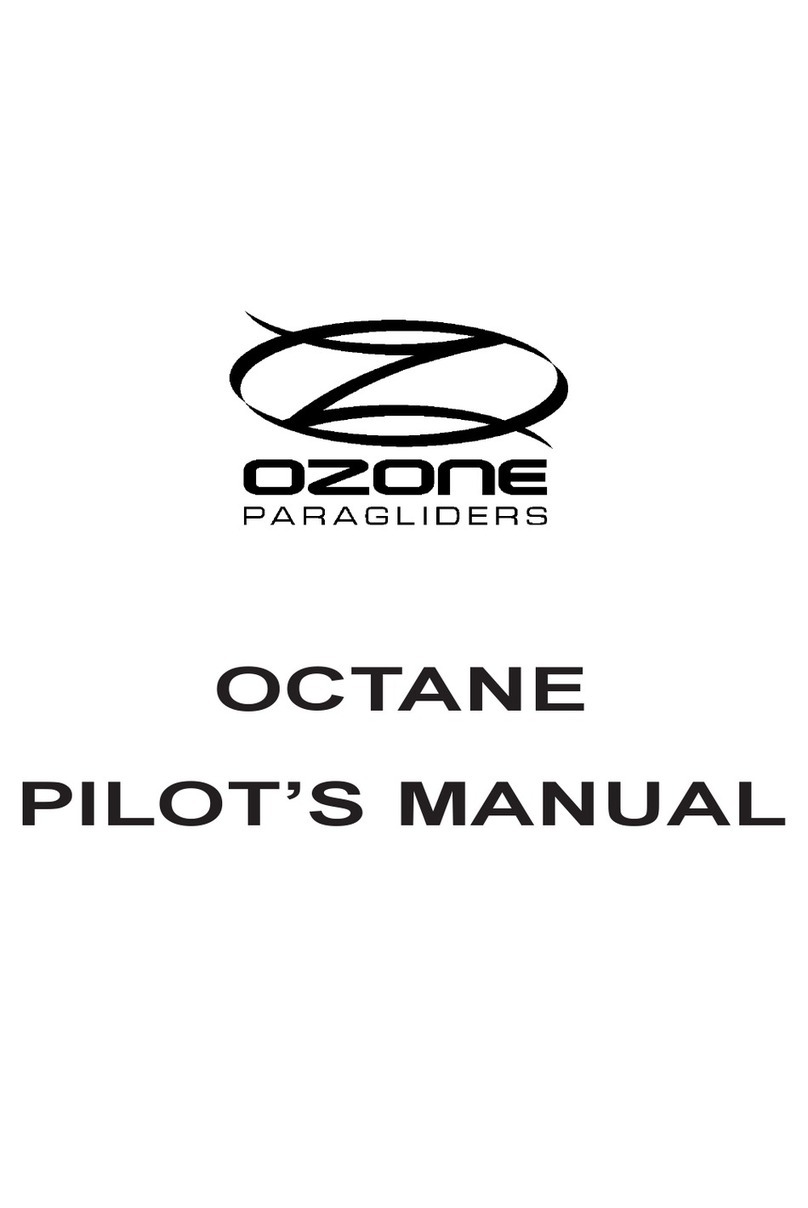
Ozone
Ozone OCTANE Pilot's manual
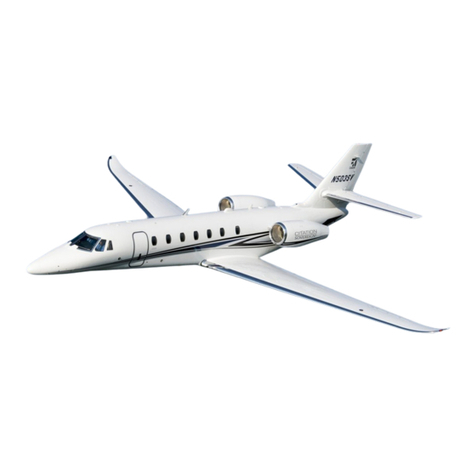
Textron
Textron Cessna Citation Sovereign Operation manual

Advance acoustic
Advance acoustic Protect II RIS user manual
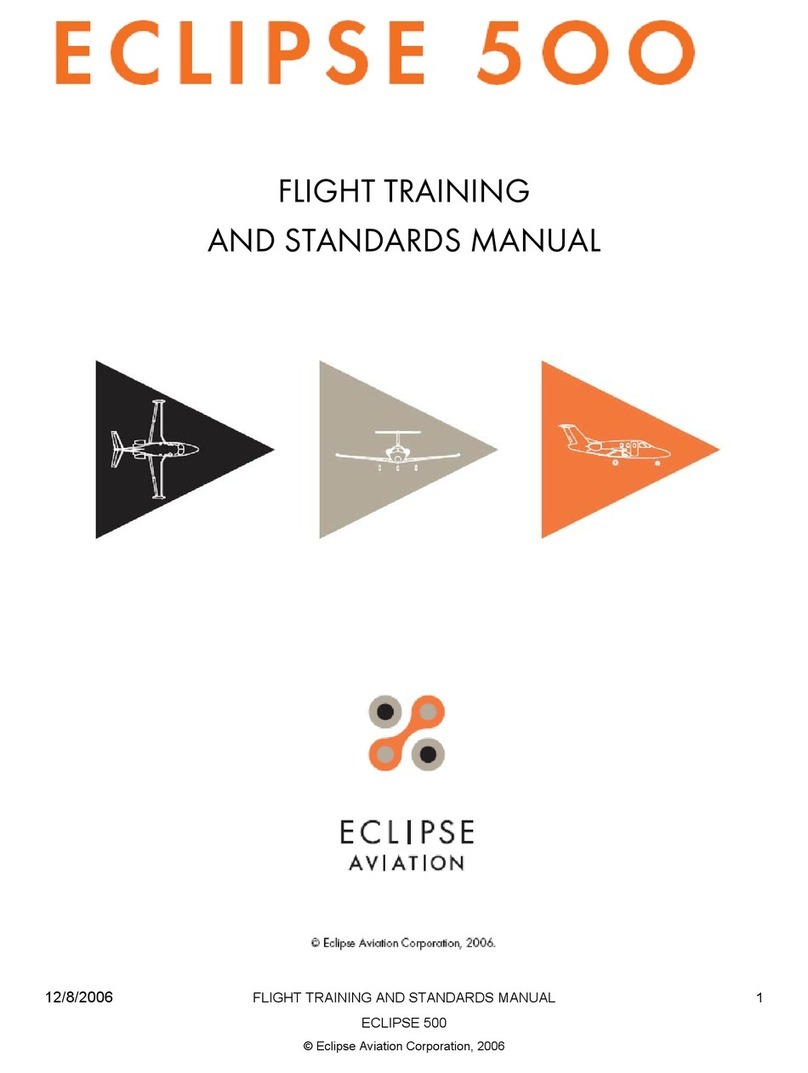
Eclipse Aviation
Eclipse Aviation Eclipse 500 Flight manual
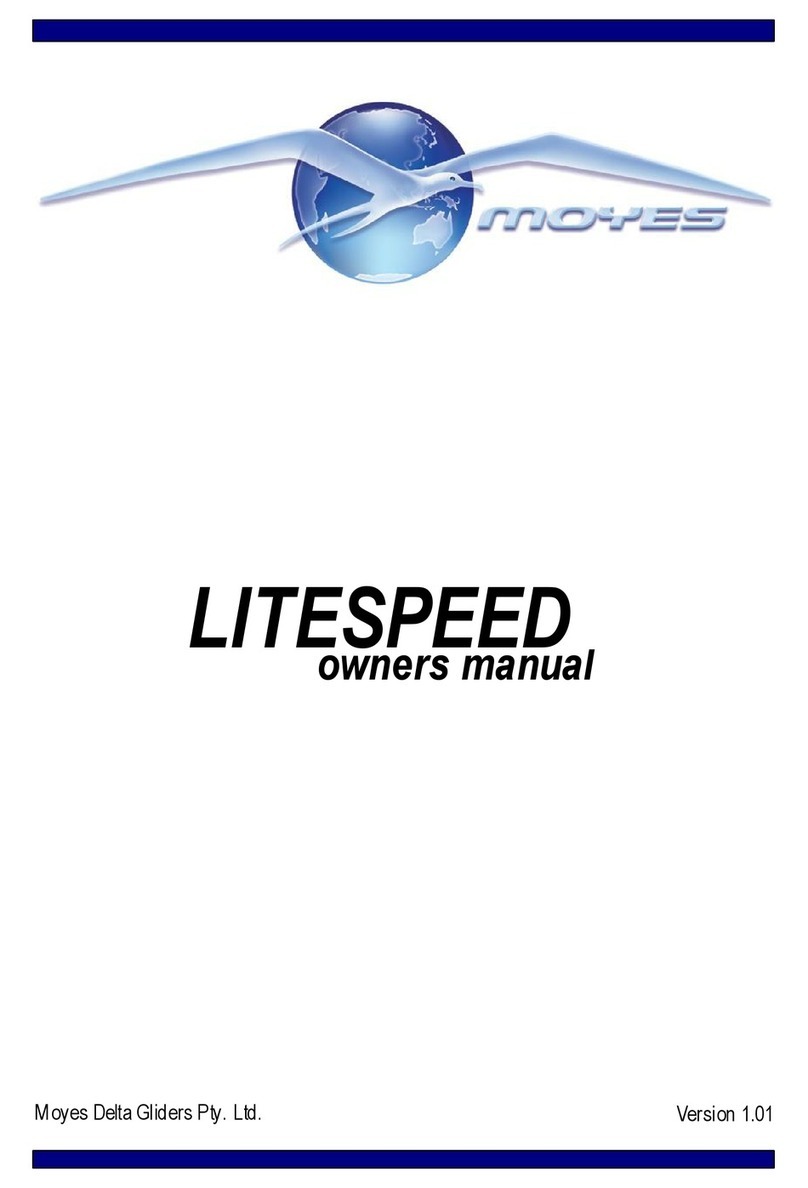
moyes
moyes LITESPEED owner's manual
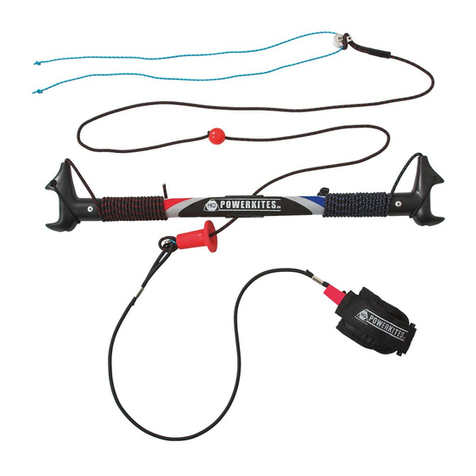
HQ-Powerkites
HQ-Powerkites 120520 owner's manual
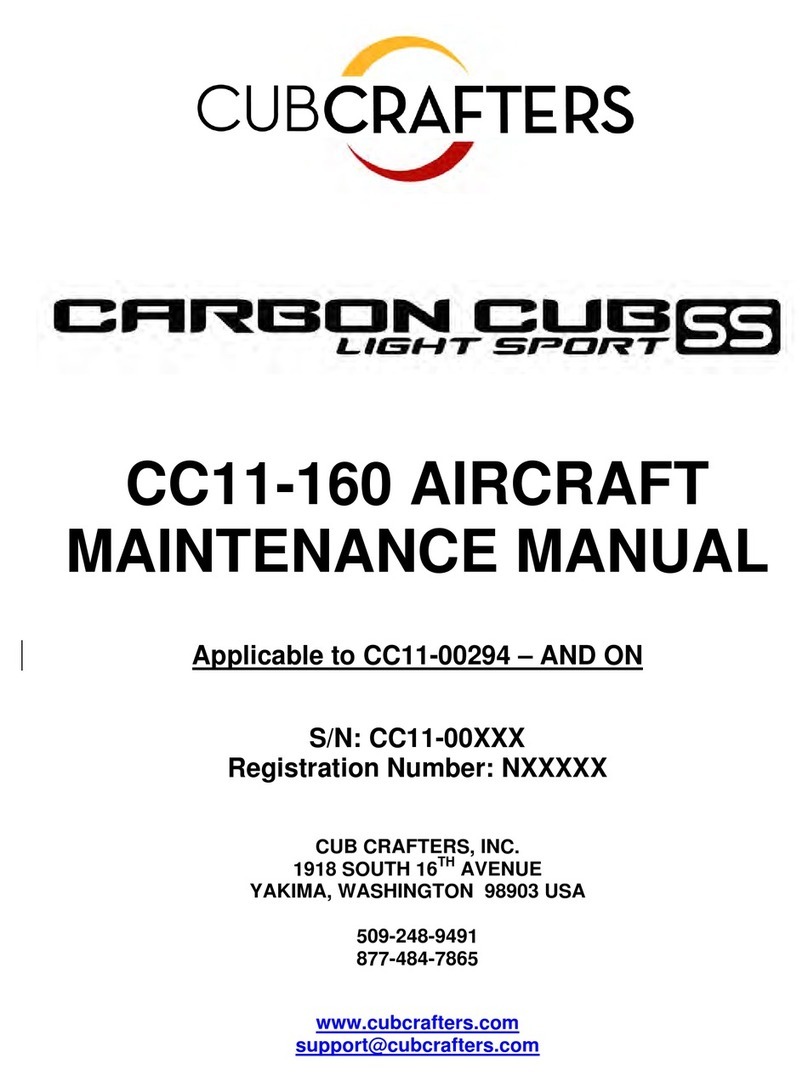
Cub Crafters
Cub Crafters CARBON CUB SS Maintenance manual

czech sport aircraft
czech sport aircraft SportCruiser N107BK Pilot operating handbook
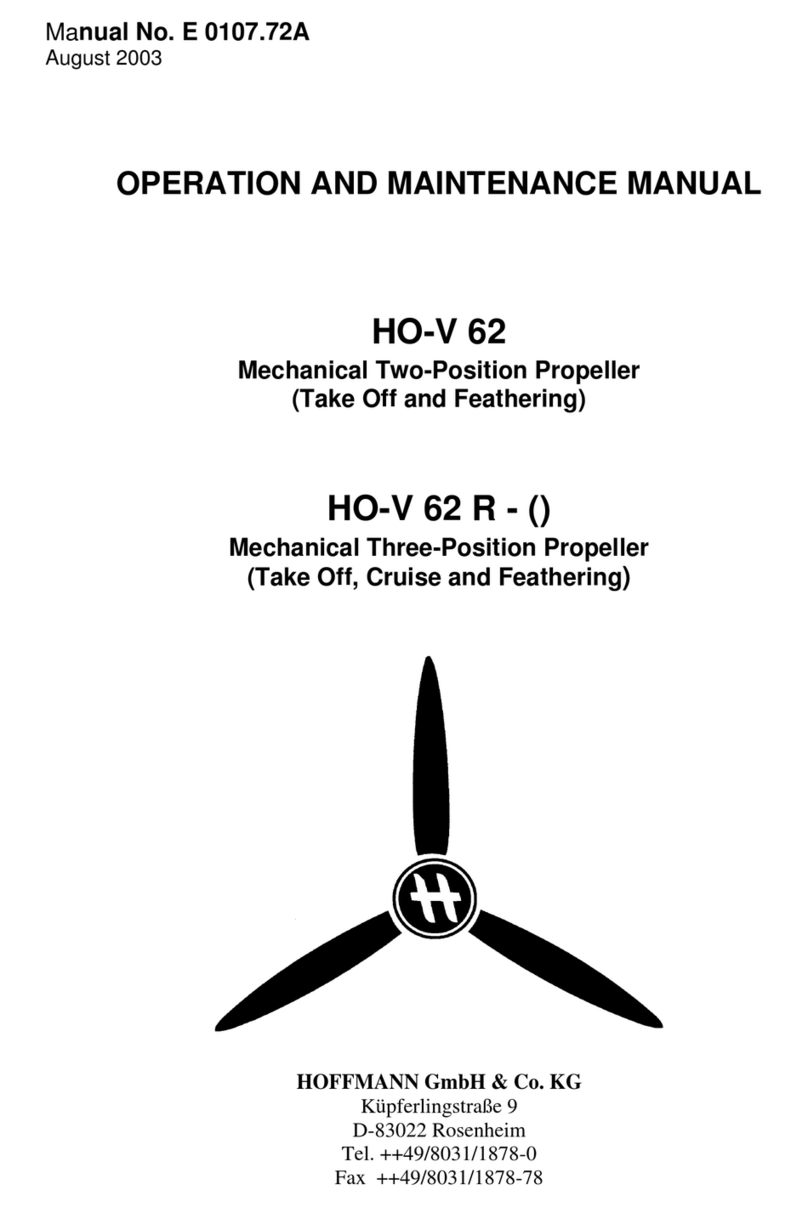
Hoffmann
Hoffmann HO-V 62 Operation and maintenance manual

Diamond
Diamond JAR-VLA Flight manual
